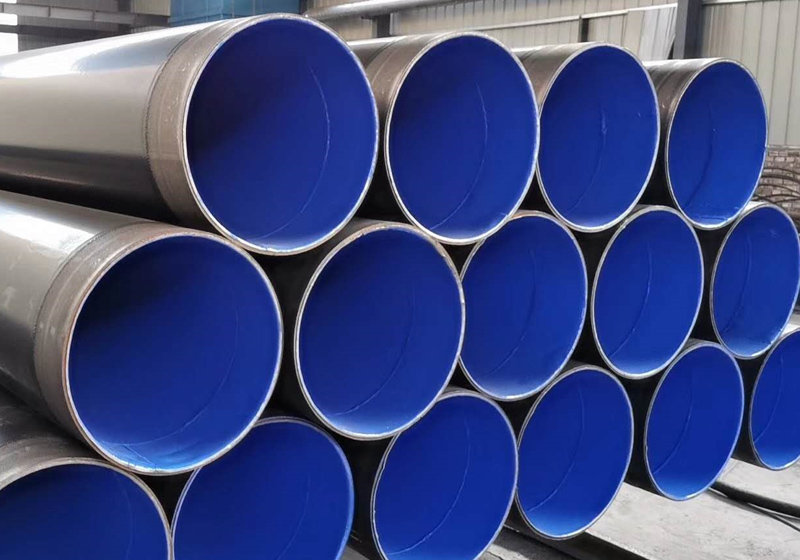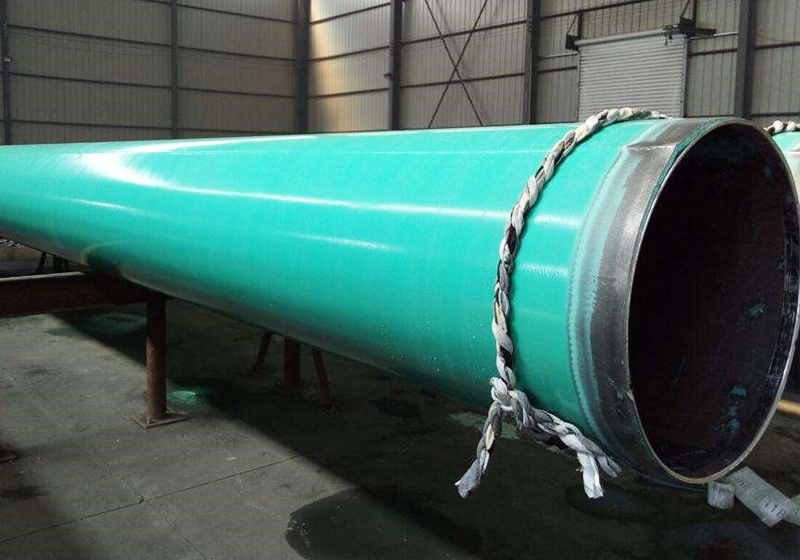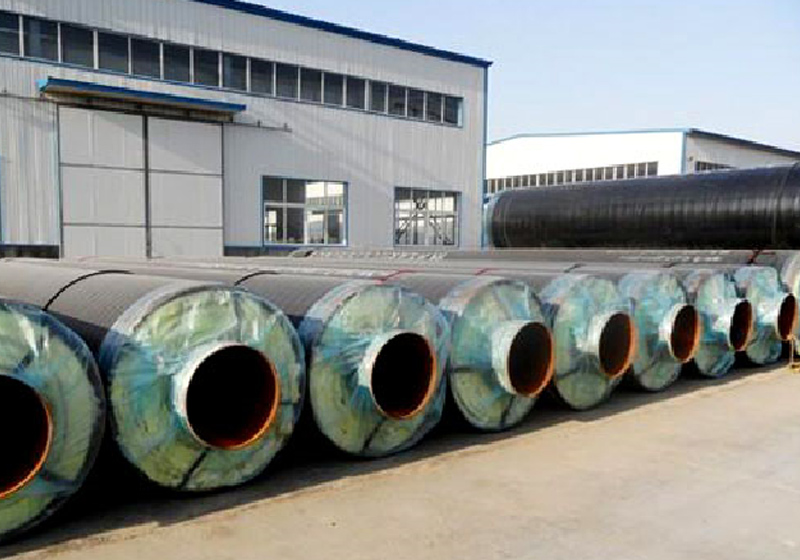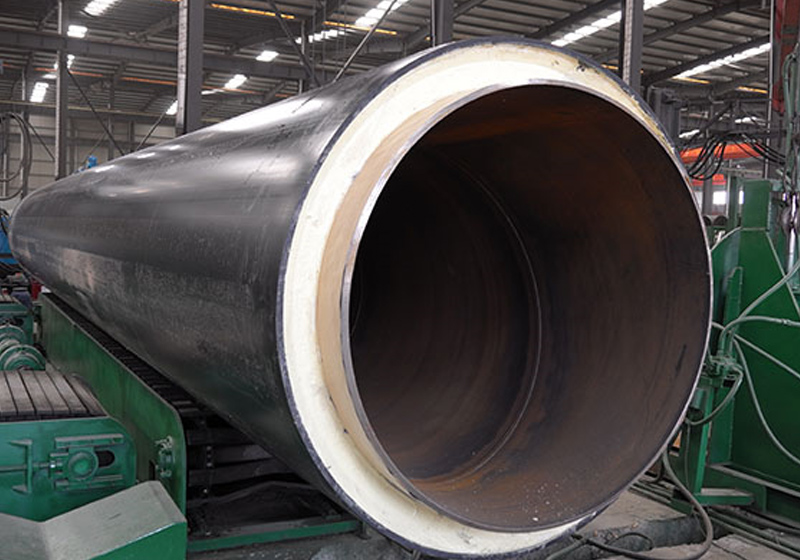Plastic coated composite steel pipe
Steel tube outer glass steel
FRP anticorrosive steel pipe
Specification: Ф89mm-Ф1820mm Wall thickness: 6mm-20mm
1. Definition of FRP anti-corrosion
The production of FRP on the surface of carbon steel, concrete or other substrates to prevent the substrate from being damaged or deteriorated under the action of the medium or the environment is called "FRP anticorrosion". Commonly used FRP anticorrosion include: FRP lining, glass flake lining, resin cement brick lining, epoxy self-leveling, epoxy powder spraying, substrate surface coated with FRP, etc.
2. Product features
The component material of FRP anticorrosion is FRP, which has all the advantages of FRP. The required technical indicators can be achieved through scientific and reasonable material selection, process design and structural design. The features of FRP anticorrosion are as follows:
1) Good designability: Due to the different properties of the base material and the reinforcing material, FRP can be selected through reasonable raw material selection, adjusting the proportion of FRP components, changing the laying method of reinforcing materials and scientific structural design to meet different physical and chemical requirements Performance requirements.
2) Excellent mechanical properties: The tensile strength of FRP is lower than steel and higher than ductile iron and concrete, while the specific strength is about 3 times that of steel, 10 times that of ductile iron, and 25 times that of concrete. The impact resistance is excellent, and the weight of the drop hammer is 1.5kg without damage under the impact height of 1600mm.
3) Chemical corrosion resistance: through reasonable selection of raw materials and scientific thickness design, FRP anticorrosion can be used for a long time in acid, alkali, salt, and organic solvent environments.
4) Good heat and cold resistance: The use temperature of ordinary glass fiber reinforced plastic is generally -40~70℃. If special resin is selected or anti-ultraviolet absorber is added, the environment temperature of the product application is -60~300℃, and it can resist long-term sunlight.
5) Good heat preservation performance: As FRP products are composited by polymer materials and reinforced materials, they have the characteristics of low thermal conductivity; at room temperature: 0.3~0.4KW/MH℃, only 1/100~1 of metal /1000 is an excellent thermal insulation material, so when the temperature difference is small (below 50°C), no special insulation is required to achieve a good insulation effect.
6) Small thermal expansion coefficient: Due to the small thermal expansion coefficient of FRP (2.0×10-5/℃), it can be used normally under various harsh conditions such as surface, underground, overhead, seabed, alpine, desert, freezing, humidity, acid and alkali.
7) Lightweight, high-strength and easy to install: the specific gravity is only 1/4-1/5 of steel and cast iron, and 2/3 of concrete. The weight of the FRP container is about 1/4 of the steel container of the same specification. Therefore, it is convenient to install and unload and easy to install.
8) Excellent electrical insulation performance: FRP materials are excellent insulation materials used to make insulators. It can still protect good dielectric properties under high frequency. Good microwave permeability; suitable for use in dense areas of power transmission and telecommunication lines and areas with many mines.
9) Excellent construction process performance: Before curing and molding, due to the fluidity of the resin, FRP can be easily processed into the required shape by using different molding methods; this feature is most suitable for the construction requirements of large, overall and complex equipment . Construction can be done on site according to environmental conditions.
3. Application areas
FRP anti-corrosion is mainly used in environments with corrosive media. It is widely used in the chemical industry's ground, acid-base pool, sewage trench, sewage tank, etc.; electroplating industry's acid-base pool, ground, etc.; municipal industry sewage tanks, sewage pumping stations Etc.; acid-base pools, floors, structures, etc. in other industries.
4. Product construction method
1. Preparation of raw materials
Select appropriate raw materials according to the type of storage medium and the temperature of the medium, combine with the reinforcement materials required for the size cutting of structures that require FRP anticorrosion, and prepare the required construction equipment and appliances, protective equipment and ventilation facilities.
2. Substrate surface treatment
Choose different treatment processes according to the type of substrate. For metal substrates, degreasing, degreasing, rust removal, dust removal, passivation or phosphating treatments should be used to remove surface protrusions, burrs, etc., repair surface defects, and ensure a smooth surface. Ensure a certain degree of roughness. For the concrete base material, the surface should be flattened with mortar
Recommended Products
Shisheng Tube-material Antiseptic
HOT LINE:
ADDRESS:
Puwacheng Industrial Development Zone,
Yanshan County, Hebei Province
Copyright © 2020 Yanshan Shisheng Tube-material Antiseptic Co., Ltd 冀ICP备20008787号-1 Power by 300.cn










 +86-03176320869
+86-03176320869

 Messages
Messages